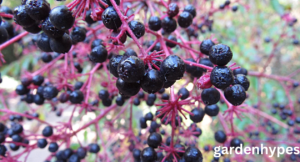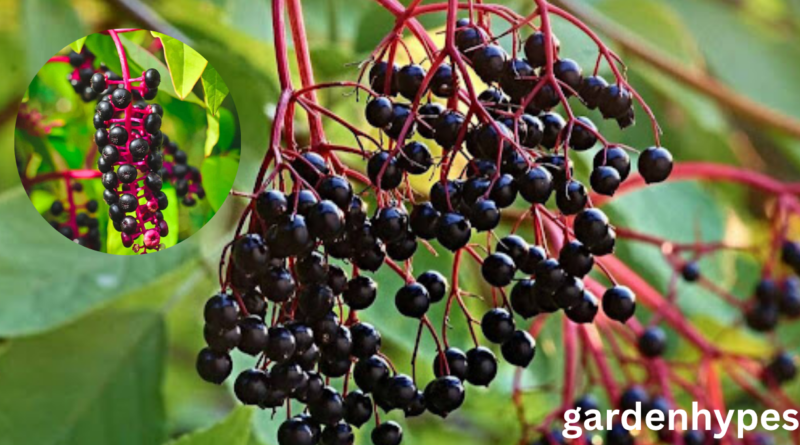Elderberry Look-Alikes: How to Identify and Avoid Dangerous Mistakes
Introduction to Elderberries
What Elderberries Are and Why They’re Popular
If you’ve ever seen a cluster of tiny, dark-purple berries hanging like little jewels on a tree or shrub, there’s a good chance you’ve spotted elderberries. Known scientifically as Sambucus,Elderberry Look-Alikes elderberries have been part of human diets and medicine cabinets for centuries. They grow in many parts of the world, including North America, Europe, and parts of Asia, thriving along roadsides, in meadows, and on the edges of forests.
click in linkTree Identification App
Elderberries are most famous for their use in syrups, jams, pies, and even wines. Herbalists love them for their potential immune-boosting properties, especially during cold and flu season. But despite their popularity, elderberries require careful handling. Raw berries and other parts of the plant contain compounds that can cause stomach upset if eaten in large amounts, so they’re usually cooked before consumption.
Unfortunately, the elderberry’s popularity has a dark side — many plants mimic its appearance, and some of those “look-alikes” are downright dangerous. If you mistake one of these toxic impostors for elderberry, you could end up with a severe case of food poisoning, or worse.
Nutritional and Medicinal Benefits of Elderberries
Elderberries are nutrient-dense little powerhouses. They’re rich in vitamin C, dietary fiber, and antioxidants like anthocyanins — the pigments that give them their deep, almost black color. These compounds help fight oxidative stress in the body, potentially reducing inflammation and supporting overall health.
In traditional medicine, elderberries have been used to help treat colds, flu, and sinus infections. Modern studies have backed some of these uses, showing that elderberry extracts can reduce the duration and severity of cold symptoms. Elderberry syrup has become a staple in many households during winter months, and homemade versions are a favorite among foragers.
However, all of these benefits only come from true elderberries — not their look-alikes. That’s why being able to distinguish them is so important.
Why Identifying Elderberries Correctly Matters
The Risks of Misidentification
The woods and fields are full of berries that, at a glance, could pass for elderberries. Unfortunately, some of these plants contain potent toxins. Eating the wrong berry can lead to nausea, vomiting, diarrhea, seizures, and in extreme cases, death. The danger is even higher for children, who might be tempted by the berries’ bright colors and sweet appearance.
One of the biggest challenges in foraging is that many look-alikes grow in the same environments as elderberries. They share similar leaf patterns, berry colors, and even flowering habits. Without careful observation, you could make a potentially dangerous mistake.
For example, pokeweed (Phytolacca americana) produces dark purple berries in clusters that look tempting — but every part of the plant is toxic, including the berries. Another notorious imposter, water hemlock (Cicuta species), is one of the most poisonous plants in North America.
click in linkTree Identification App

Common Symptoms of Consuming Toxic Berries
If you accidentally consume a toxic elderberry look-alike, symptoms can set in quickly — sometimes within minutes, sometimes after a few hours. Here are some common warning signs:
- Gastrointestinal distress: Nausea, vomiting, stomach cramps, and diarrhea are often the first symptoms.
- Neurological effects: Dizziness, confusion, seizures, and in severe cases, loss of consciousness.
- Respiratory distress: Difficulty breathing, especially with plants like water hemlock, which can affect the nervous system.
- Cardiac symptoms: Irregular heartbeat or cardiac arrest in extreme cases.
If you experience any of these after eating foraged berries, seek medical help immediately. Quick action can save lives.
Key Characteristics of Elderberry Plants
Leaves and Leaf Arrangement
True elderberries have compound leaves, meaning each leaf is made up of several smaller leaflets. Typically, there are five to nine leaflets arranged in opposite pairs along the stem, with one leaflet at the tip. The leaflets themselves are oval with serrated edges and pointed tips. The upper surface is a rich green, while the underside is lighter.
One important detail is that elderberry leaves grow opposite each other on the stem — not alternately. This might seem like a minor detail, but it’s one of the easiest ways to distinguish elderberries from many of their toxic look-alikes.
Flower Clusters and Bloom Time
Elderberry flowers appear in late spring to early summer, usually around May or June, depending on your location. They grow in large, flat-topped clusters called umbels, each one packed with tiny, creamy-white blossoms. These flowers have a delicate, sweet fragrance that attracts pollinators like bees and butterflies.
In contrast, many toxic look-alikes have different flower structures. For example, pokeweed flowers are small, greenish-white, and arranged along a single stem rather than in a flat cluster.
Berry Appearance and Ripening Stage
True elderberries form in dense clusters that hang down from the plant like bunches of grapes. Each berry is small — about ⅛ inch in diameter — and turns from green to deep purple or black when ripe. The stems holding the berry clusters are often a purplish-red color.
One key safety tip: Elderberries always grow in umbrella-shaped clusters, never in tight, vertical spikes. If you see berries arranged on a single central stalk, they are not elderberries.
click in linkTree Identification App

Common Elderberry Look-Alikes
Pokeweed (Phytolacca americana)
Pokeweed is one of the most common elderberry impostors. Like elderberries, it produces dark purple berries, but there are big differences if you know where to look.
- Stem color: Pokeweed stems are thick, smooth, and often bright magenta or red from the base up.
- Berry arrangement: Pokeweed berries grow in a long, vertical raceme — a spike — rather than in a flat-topped cluster.
- Toxicity: Every part of the pokeweed plant is poisonous, especially the root. Even touching the plant can cause skin irritation in sensitive people.
Despite being toxic, pokeweed has been used in traditional cooking after extensive preparation, but unless you are an expert, it’s best to avoid it completely.
FAQs
- Can I eat raw elderberries?
It’s not recommended. Raw elderberries contain small amounts of cyanogenic glycosides, which can cause nausea, vomiting, and diarrhea. Cooking them destroys these compounds and makes them safe to eat. - Which parts of the elderberry plant are toxic?
The seeds, leaves, stems, and unripe berries contain toxins. Always remove stems and leaves before cooking, and make sure berries are fully ripe. - How can I be 100% sure I’ve found elderberries?
Check for these key features: opposite leaf arrangement, flat-topped clusters of tiny white flowers (or berries), and purplish stems on ripe berry clusters. If in doubt, don’t eat them — consult a local plant expert. - Are elderberry flowers safe to eat?
Yes, elderberry flowers are edible and often used to make teas, syrups, and fritters. But make sure you’ve correctly identified the plant before harvesting.
- What’s the most dangerous elderberry look-alike?
Water hemlock is the deadliest. It can be mistaken for elderberry during the flowering stage, and even a small amount can be fatal if consumed.
